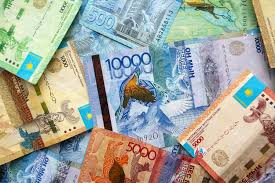This week we are visiting Kazakhstan, a Central Asian country
and former Soviet republic, it extends from the Caspian Sea in the west to the
Altai Mountains at its eastern border with China and Russia.
It was once called the Kazakh Soviet Socialist Republic and was
one of the constituent republics of the Soviet Union from 1936 until its
dissolution in 1991.
Its largest metropolis, Almaty, is a long-standing trading hub
whose landmarks include Ascension Cathedral, a tsarist-era Russian Orthodox
church, and the Central State Museum of Kazakhstan, displaying thousands of
Kazakh artifacts.
The capital is Astana although before 1997 the capital was
Almaty, it has population of 1,423,726 it is the second largest city in the country.
The population of the country is around 20 million.
Kazakhstan is officially a
bilingual country those languages are Kazakh and Russian. The currency is
the Tenge.
The flag is a light blue field with a gold sun and soaring
golden steppe eagle in the centre. Along the hoist side is a vertical band
of national ornamentation in gold. The blue represents the endless sky and
the unity of the Kazakh people, while the sun and eagle symbolize prosperity
and freedom, respectively. The current flag was adopted in 1992, replacing
the flag of the Kazakh Soviet Socialist Republic.
When it comes to religion the main ones are Islam and Christianity, the majority of Kazakhs, particularly ethnic Kazakhs, identify as Muslim. Most practice Sunni Islam of the Hanafi school. There are also smaller communities of Shia, Sufi, and Ahmadi Muslims.
A significant portion of the population, especially ethnic
Russians, Ukrainians, and Belarusians, identify as Orthodox
Christian. Other Christian denominations include Catholics, Lutherans,
Presbyterians, Baptists, Pentecostals, and members of The Church of Jesus
Christ of Latter-day Saints.
Smaller communities of Jews, Buddhists, and followers of other
faiths like the Baha'i faith and Scientology also exist.
Kazakhstan is a presidential republic, where the President
holds significant power. The President serves as both head of state and
commander-in-chief, and also appoints the Prime Minister and other cabinet
members. The country has a bicameral parliament, consisting of the Senate
and the Majilis.
While the constitution outlines democratic principles like
freedom of speech and religion, Kazakhstan's political system is described as
semi-presidential with a strong executive branch, and there are concerns about
the fairness of elections and restrictions on freedoms.
That will do for now, part two next week.









Very interesting Jo-Anne, didn't know a lot about Kazakhstan.
ReplyDeleteI had heard of the country but knew nothing about it
DeleteSo many countries I know nothing about. Thanks Joanne
ReplyDeleteSame here
DeleteOne of the KHL hockey's founding teams are the Barys (Snow Leopards) of Astana.
ReplyDeleteCool
DeleteAlways enjoy traveling the world with you, Jo-Anne. Thanks!
ReplyDeleteThanks, that's nice to read
DeleteNever knew about this one at all! :)
ReplyDeleteThere are a lot of countries that I have not heard of as well
Delete